Voriconazole-d3
- CAS NO.:188416-29-7
- Empirical Formula: C16H14F3N5O
- Molecular Weight: 349.31
- MDL number: MFCD09263753
- EINECS: 1312995-182-4
- SAFETY DATA SHEET (SDS)
- Update Date: 2023-06-01 14:25:53
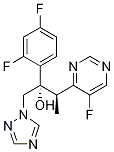
What is Voriconazole-d3?
Description
Voriconazole-d3 is a labeled form of Voriconazole which is an Ergosterol biosynthesis inhibitor. This monotriazole antifungal agent inhibits the growth of Candida, Cryptococcus, and Aspergillus species. Studies suggest that Voriconazole-d3 can be synthesized by modifying the structure of fluconazole. This antifungal agent functions by inhibiting cytochrome P450 dependent 14-α-sterol demethylase, which is responsible in the biosynthesis of Ergosterol. Furthermore, Voriconazole-d3 inhibits fungal growth, cell wall thinning, and cell membrane degradation.
The Uses of Voriconazole-d3
Voriconazole is a triazole antifungal agent used primarily in the treatment or prevention of aspergillosis and candidal infections. Voriconazole therapy is associated with transient, asymptomatic serum aminotransferase elevations and is a known cause of clinically apparent acute drug induced liver injury.
What are the applications of Application
Voriconazole-d3 is derived from 2,4-Difluoro-α-(1H-1,2,4-triazolyl)acetophenone, which is an antifungal activity, particularly toward Candida albicans and Candida parapsilosis.
References
1. Voriconazole (UK-109,496) inhibits the growth and alters the morphology of fluconazole-susceptible and -resistant Candida species DOI:10.1128/AAC.41.8.1840
Belanger, P., et al. 1997. Antimicrob. Agents Chemother. 41: 1840-1842. PMID: 9257776
2. In vitro activities of voriconazole (UK-109,496) and four other antifungal agents against 394 clinical isolates of Candida spp
Marco, F., et al. 1998. Antimicrob. Agents Chemother. 42: 161-163. PMID: 9449278
3. In vitro activity of the new triazole voriconazole (UK-109,496) against opportunistic filamentous and dimorphic fungi and common and emerging yeast pathogens
Espinel-Ingroff, A. 1998. J. Clin. Microbiol. 36: 198-202. PMID: 9431946
Properties of Voriconazole-d3
| Boiling point: | 508.6±60.0 °C(Predicted) |
| Density | 1.42±0.1 g/cm3(Predicted) |
| pka | 11.54±0.29(Predicted) |
Safety information for Voriconazole-d3
| Signal word | Warning |
| Pictogram(s) |
 Exclamation Mark Irritant GHS07 |
| GHS Hazard Statements |
H302:Acute toxicity,oral H315:Skin corrosion/irritation H319:Serious eye damage/eye irritation H335:Specific target organ toxicity, single exposure;Respiratory tract irritation |
| Precautionary Statement Codes |
P261:Avoid breathing dust/fume/gas/mist/vapours/spray. P264:Wash hands thoroughly after handling. P264:Wash skin thouroughly after handling. P270:Do not eat, drink or smoke when using this product. P271:Use only outdoors or in a well-ventilated area. P280:Wear protective gloves/protective clothing/eye protection/face protection. P330:Rinse mouth. P362:Take off contaminated clothing and wash before reuse. P301+P312:IF SWALLOWED: call a POISON CENTER or doctor/physician IF you feel unwell. P302+P352:IF ON SKIN: wash with plenty of soap and water. P304+P340:IF INHALED: Remove victim to fresh air and Keep at rest in a position comfortable for breathing. P305+P351+P338:IF IN EYES: Rinse cautiously with water for several minutes. Remove contact lenses, if present and easy to do. Continuerinsing. P332+P313:IF SKIN irritation occurs: Get medical advice/attention. P337+P313:IF eye irritation persists: Get medical advice/attention. P405:Store locked up. P403+P233:Store in a well-ventilated place. Keep container tightly closed. P501:Dispose of contents/container to..… |
Computed Descriptors for Voriconazole-d3
New Products
(S)-3-Aminobutanenitrile hydrochloride 4-Methylphenylacetic acid N-Boc-D-alaninol N-BOC-D/L-ALANINOL Tert-butyl bis(2-chloroethyl)carbamate 3-Morpholino-1-(4-nitrophenyl)-5,6-dihydropyridin- 2(1H)-one Furan-2,5-Dicarboxylic Acid Tropic acid 1-Bromo-3,5-Di-Tert-Butylbenzene S-2-CHLORO PROPIONIC ACID ETHYL ISOCYANOACETATE 2-Bromo-1,3-Bis(Dimethylamino)Trimethinium Hexafluorophosphate 4-IODO BENZOIC ACID 3-NITRO-2-METHYL ANILINE 1-(2,4-DICHLOROPHENYL) ETHANAMINE (2-Hydroxyphenyl)acetonitrile 4-Bromopyrazole 2-(Cyanocyclohexyl)acetic acid 4-methoxy-3,5-dinitropyridine 1-(4-(aminomethyl)benzyl)urea hydrochloride 2-aminopropyl benzoate hydrochloride diethyl 2-(2-((tertbutoxycarbonyl)amino) ethyl)malonate tert-butyl 4- (ureidomethyl)benzylcarbamate Ethyl-2-chloro((4-methoxyphenyl)hydrazono)acetateRelated products of tetrahydrofuran

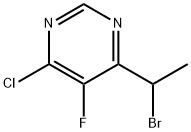
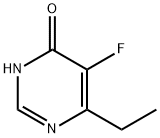
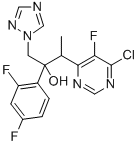


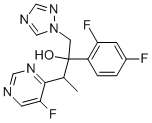
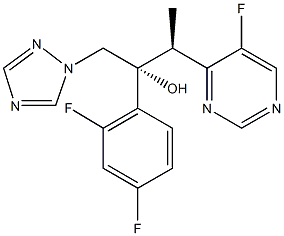
You may like
-
 2033-24-1 98%View Details
2033-24-1 98%View Details
2033-24-1 -
 42831-50-5 5-METHYLISOXAZOLE-4-CARBOXYLIC ACID 98%View Details
42831-50-5 5-METHYLISOXAZOLE-4-CARBOXYLIC ACID 98%View Details
42831-50-5 -
 1975-50-4 98%View Details
1975-50-4 98%View Details
1975-50-4 -
 2-HYDROXY BENZYL ALCOHOL 98%View Details
2-HYDROXY BENZYL ALCOHOL 98%View Details
90-01-7 -
 2-Chloro-1,3-Bis(Dimethylamino)Trimethinium Hexafluorophosphate 221615-75-4 98%View Details
2-Chloro-1,3-Bis(Dimethylamino)Trimethinium Hexafluorophosphate 221615-75-4 98%View Details
221615-75-4 -
 61397-56-6 CIS BROMO BENZOATE 98%View Details
61397-56-6 CIS BROMO BENZOATE 98%View Details
61397-56-6 -
 14714-50-2 (2-Hydroxyphenyl)acetonitrile 98+View Details
14714-50-2 (2-Hydroxyphenyl)acetonitrile 98+View Details
14714-50-2 -
 118753-70-1 98+View Details
118753-70-1 98+View Details
118753-70-1